Deputy Prime Minister of the United Kingdom facts for kids
Quick facts for kids United KingdomDeputy Prime Minister of the United Kingdom of Great Britain and Northern Ireland |
|
|---|---|

Royal Arms of His Majesty's Government
|
|
| Government of the United Kingdom Cabinet Office |
|
| Style |
|
| Member of |
|
| Reports to | The Prime Minister |
| Residence | None, may use grace and favour residences |
| Seat | Westminster |
| Formation | 1942 |
| First holder | Clement Attlee |
The deputy prime minister of the United Kingdom is an honorific title given to a minister of the Crown and a member of the British Cabinet, normally to signify a very senior minister, the deputy leader of the governing party, or a key political ally of the prime minister. It does not entail any specific legal responsibilities, though the holder may be assigned some, and is usually paired with a departmental secretary of state position. The title is not always in use and prime ministers have been known to appoint deputies with title first secretary of state or informal deputies without any honorific title. The current deputy prime minister is Angela Rayner.
Contents
Constitutional position
Deputy prime minister is a title and successive monarchs have refused to officially recognise the position. It brings with it no salary and the holder of the title has no right to automatic succession to the premiership.
When Winston Churchill attempted to have Anthony Eden appointed deputy prime minister in 1942, George VI said that the 'office ... does not exist' and that conferring the title may be seen as an attempt to designate the prime minister's successor and thus may restrict the monarch's royal prerogative. However, Vernon Bogdanor has said that that argument holds little weight in the modern context, since the monarch no longer has any real discretion, and that, even in the past, a person acting as deputy prime minister had no real advantage to being appointed prime minister.
Responsibilities
The title is not always in use and the holder's responsibilities will vary depending on the circumstances. As of December 2024, the deputy prime minister's responsibilities include: deputising for the prime minister (in the House of Commons, domestically and internationally), supporting the prime minister, special responsibility for employment rights and cross-governmental coordination of communities policy.
Rodney Brazier has written that there are three reasons why a deputy prime minister has been appointed: to set out the line of succession to the premiership preferred by the prime minister, to promote the efficient discharge of government business and (in the case of Labour governments) to accord recognition to the status of the deputy leader of the Labour party. Jonathan Kirkup and Steven Thornton suggest that there are multiple motivations behind a prime minister appointing a deputy: leader of a party in a coalition government, as their designated successor, to neuter or mollify a rival, because they are a 'safe pair of hands' and to create a 'balanced ticket'.
Philip Norton says that there are two advantages to a prime minister of having a deputy prime minister (or first secretary of state): functional (to serve the prime minister free of departmental responsibilities, so they can do 'correlation, co-ordination and chairmanship of committees', in the words of Rab Butler) and political (to send a signal as to the status of the holder). Bogdanor, Brazier and Anthony Seldon also suggest that the title may be of use if a prime minister were to die or fall unable to exercise their functions.
History
Before World War II, while a minister was occasionally invited to deputise as prime minister when the prime minister was ill or abroad, no one was styled as such when the prime minister was in the country and physically able to run the government. This changed in 1942 when Clement Attlee was styled as deputy prime minister by Winston Churchill. This designation was seen as an exceptional result of a coalition and the war, and Attlee's 1942 appointment was not formally approved by the King and was a matter of form rather than fact. The designation was because Churchill wanted to demonstrate the importance of the Labour party in the coalition, not for any reasons relating to succession; he actually left written advice that the King should send for Anthony Eden if he were to die, not Attlee. Unusually in comparison to other unofficial deputy prime ministers, Clement Attlee was described as deputy prime minister by Hansard, whereas other unofficial deputies are described using their official position.
After this, fearing a possible curtailment of the monarch's prerogative to choose a prime minister, no one was formally styled deputy prime minister (though there was often a senior minister generally regarded as such) until Michael Heseltine in 1995. As the title of deputy prime minister did not hold any statutory authority, Heseltine was also appointed as First Secretary of State. John Prescott served as deputy prime minister under Tony Blair during the entirety of Blair's premiership, and remains the longest-serving deputy prime minister. Prescott's statutory authority was originally drawn from his concurrent position as Secretary of State for the Environment, Transport and the Regions; however, in 2001 this department was broken up and the Office of the Deputy Prime Minister (ODPM) was also formed within the Cabinet Office. To ensure he continued to hold statutory authority, he was appointed First Secretary of State. In June 2003, the ODPM became a separate department and absorbed the local government and regions portfolios from the defunct Department for Transport, Local Government and the Regions. During the 5 May 2006 reshuffle of Tony Blair's government, Prescott kept his position as deputy prime minister but lost his departmental authority and OPDM was renamed the Department for Communities and Local Government and headed by Ruth Kelly. The position was vacant during Gordon Brown's premiership.
After the Conservatives and the Liberal Democrats formed a coalition government in 2010, Nick Clegg was appointed deputy prime minister under David Cameron, and served in this role until he resigned after the Conservatives won a majority in the 2015 general election. During the coalition William Hague was appointed by Cameron as First Secretary of State, the only time that both these positions have existed concurrently but not been held by the same person. During this time Cameron described Hague rather than Clegg as being his 'de facto political deputy'. The office of deputy prime minister was vacant for the remainder of Cameron's premiership and the entirety of Theresa May's premiership.
In 2020, a year before being formally styled deputy prime minister, Dominic Raab deputised for Boris Johnson while Johnson was in hospital with COVID-19, though was not formally styled deputy prime minister until September 2021. Raab served as deputy prime minister during the remainder of Johnson's premiership. Thérèse Coffey served as deputy prime minister in September and October 2022 under Liz Truss, becoming the shortest serving deputy prime minister in history. After Rishi Sunak became prime minister, he reappointed Raab as deputy prime minister, making him the first non-consecutive holder of the office. Raab resigned in April 2023 after the investigation into his alleged bullying was published, and was succeeded by deputy prime minister Oliver Dowden, who resigned after the 2024 general election, whereupon he was replaced by Angela Rayner in Keir Starmer's Labour government.
Office and residence
There is no set of offices permanently ready to house the deputy prime minister. Deputy Prime Minister Nick Clegg maintained an office at the Cabinet Office headquarters, 70 Whitehall, which is linked to 10 Downing Street. Clegg's predecessor, Prescott, maintained his main office at 26 Whitehall.
The prime minister may also give them the use of a grace and favour country house. While in office, Nick Clegg resided at his private residence in Putney and he shared Chevening House with First Secretary William Hague as a weekend residence. Clegg's predecessor, John Prescott, used Dorneywood.
List of deputy prime ministers
The following people have held the title of deputy prime minister.
| Deputy Prime Minister | Term of office | Duration | Other ministerial portfolios held during tenure | Party | Ministry | |||
|---|---|---|---|---|---|---|---|---|
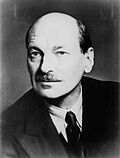 |
Clement Attlee MP for Limehouse (1883–1967) |
19 February 1942 |
23 May 1945 |
3 years, 94 days |
|
Labour | Churchill War | |
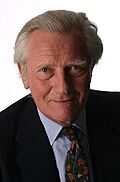 |
Michael Heseltine MP for Henley (born 1933) |
5 July 1995 |
2 May 1997 |
1 year, 302 days | Conservative | Major II | ||
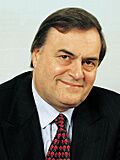 |
John Prescott MP for Kingston upon Hull East (1938–2024) |
2 May 1997 |
27 June 2007 |
10 years, 57 days |
|
Labour | Blair I | |
| Blair II | ||||||||
| Blair III | ||||||||
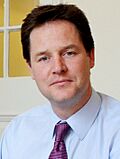 |
Nick Clegg MP for Sheffield Hallam (born 1967) |
11 May 2010 |
8 May 2015 |
4 years, 363 days | Liberal Democrat | Cameron–Clegg | ||
 |
Dominic Raab MP for Esher and Walton (born 1974) |
15 September 2021 |
6 September 2022 |
357 days |
|
Conservative | Johnson II | |
 |
Thérèse Coffey MP for Suffolk Coastal (born 1971) |
6 September 2022 |
25 October 2022 |
50 days | Truss | |||
 |
Dominic Raab MP for Esher and Walton (born 1974) |
25 October 2022 |
21 April 2023 |
179 days |
|
Sunak | ||
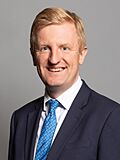 |
Oliver Dowden MP for Hertsmere (born 1978) |
21 April 2023 |
5 July 2024 |
1 year, 76 days |
|
|||
 |
Angela Rayner MP for Ashton-under-Lyne (born 1980) |
5 July 2024 |
Incumbent | 296 days |
|
Labour | Starmer | |
Timeline

Unofficial deputies
The prime minister's second-in-command has variably served as deputy prime minister, first secretary and de facto deputy and at other times prime ministers have chosen not to select a permanent deputy at all, preferring ad hoc arrangements. It has also been suggested that the office of Lord President of the Council (which comes with leading precedence) has been intermittently used for deputies in the past.
Lists
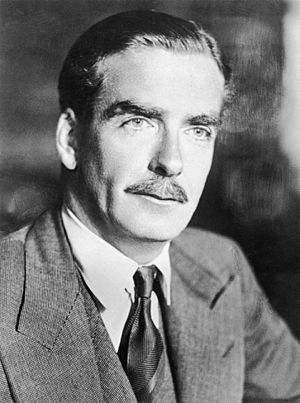
Picking out definitive deputies to the prime minister has been described as a highly problematic task.
Bogdanor, in his 1995 publication The Monarchy and the Constitution, said that the following people had acted as deputy prime ministers (by this he meant they had chaired the Cabinet in the absence of the prime minister and chaired a number of key Cabinet Committees):
| Clement Attlee |
| Herbert Morrison |
| Anthony Eden |
| Rab Butler |
| George Brown |
| Michael Stewart |
| Reginald Maudling |
| William Whitelaw |
| Geoffrey Howe |
In an academic article first published in 2015, Jonathan Kirkup and Stephen Thornton used five criteria to identify deputies: gazetted or styled in Hansard as deputy prime minister; 'officially' designated deputy prime minister by the prime minister; widely recognised by their colleagues as deputy prime minister; second in the ministerial ranking; and chaired the Cabinet or took Prime Minister's Questions in the prime minister's absence. They said that the following people have the best claim to the position of deputy to the prime minister:
| Clement Attlee |
| Herbert Morrison |
| Anthony Eden |
| Rab Butler |
| George Brown |
| Michael Stewart |
| Willie Whitelaw |
| Geoffrey Howe |
| Michael Heseltine |
| John Prescott |
| Nick Clegg |
They also said that the following three people would have a reasonable claim:
| Andrew Bonar Law |
| Edward Short |
| Michael Foot |
Brazier has listed the following ministers as unambiguously deputy to or de facto deputies of the prime minister:
| Clement Attlee | 1940–1945 |
| Anthony Eden | 1945 1951–1955 |
| Rab Butler | 1955–1963 |
| George Brown | 1964–1970 |
| Reginald Maudling | 1970–1972 |
| Willie Whitelaw | 1979–1988 |
| Geoffrey Howe | 1989–1990 |
| Michael Heseltine | 1995–1997 |
| John Prescott | 1997–2007 |
| Nick Clegg | 2010–2015 |
| George Osborne | 2015–2016 |
| Damian Green | 2017 |
| David Lidington | 2018–2019 |
| Dominic Raab | 2019–2022 |
Lord Norton of Louth has listed the following people as serving as deputy prime minister, but not being formally styled as such:
| Herbert Morrison | 1945–1951 |
| Anthony Eden | 1951–1955 |
| Rab Butler | 1962–1963 |
| Willie Whitelaw | 1979–1988 |
| Geoffrey Howe | 1989–1990 |
| David Lidington | 2018–2019 |
Succession
Nobody has the right of automatic succession to the prime ministership. However, it is generally considered that in the event of the death of the prime minister, it would be appropriate to appoint an interim prime minister, though there is some debate as to how to decide who this should be. In 2021, Cabinet Secretary Simon Case suggested:
[I]t would likely have to be a decision for Cabinet to nominate somebody who could step into the role of Prime Minister in the belief that they could fulfil that requirement and command a majority in the House. The sovereign would need to be given a rapid and clear recommendation by the Government on who to call on. By our estimation, and given the pressures of the job, we do not think you would want to leave it for more than 48 hours before identifying such a person.
When the prime minister is travelling, it is standard practice for a senior duty minister to be appointed who can attend to urgent business and meetings if required, though the prime minister remains in charge and updated throughout. And, on 6 April 2020, when Prime Minister Boris Johnson was admitted into ICU, he asked First Secretary of State Dominic Raab "to deputise for him where necessary".
See also
 In Spanish: Vice primer ministro del Reino Unido para niños
In Spanish: Vice primer ministro del Reino Unido para niños
- First Secretary of State
- Deputy Leader of the Labour Party (UK)


